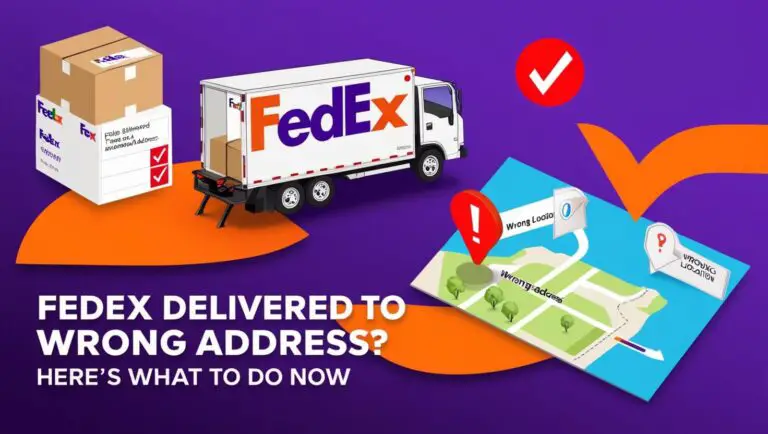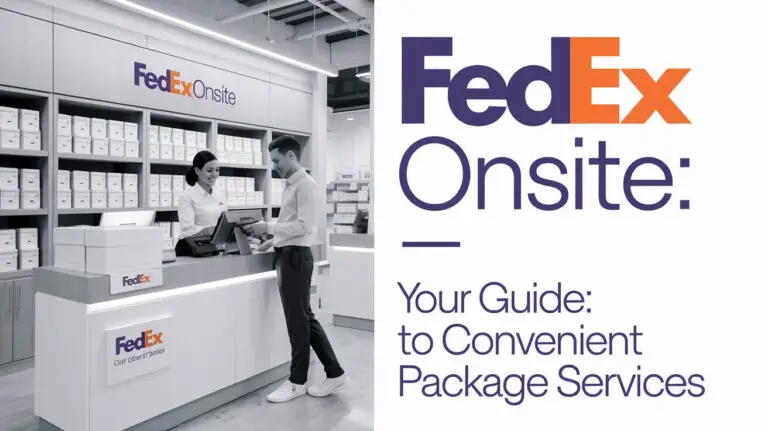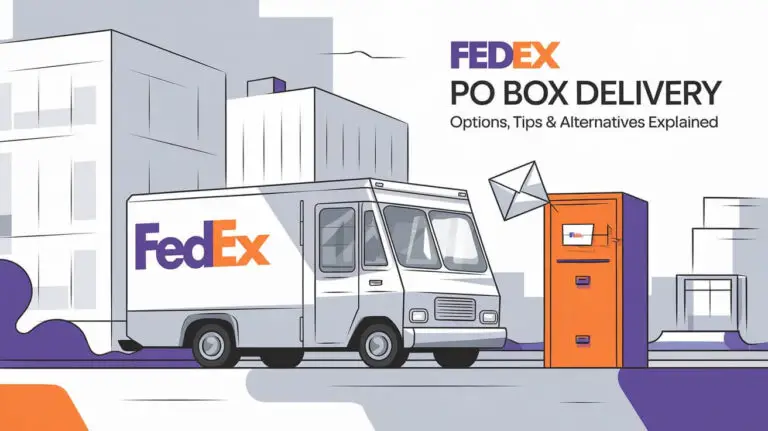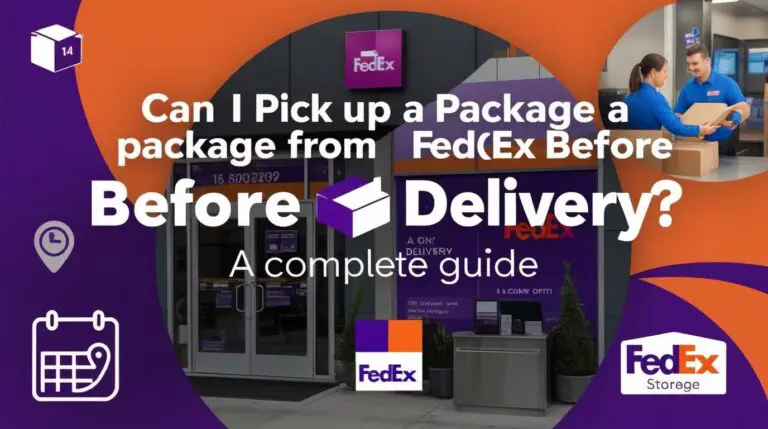What Does “In Transit” Mean for FedEx Packages?
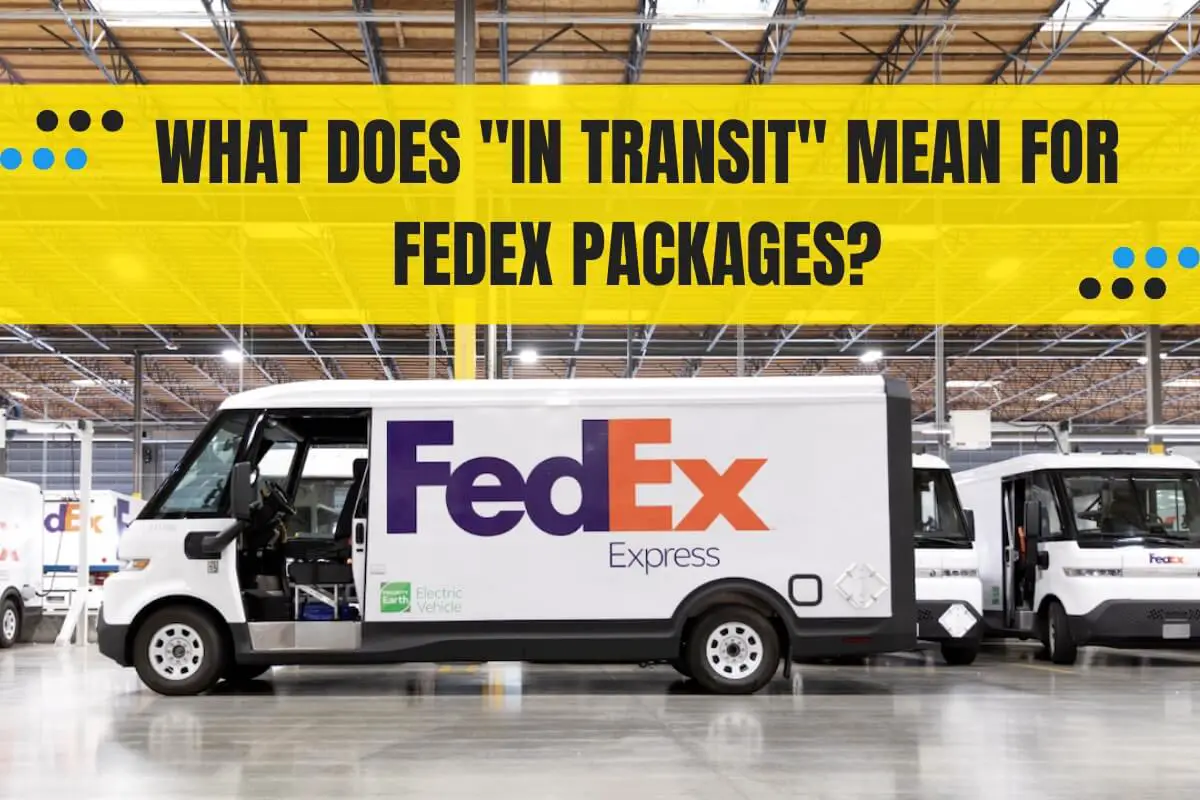
When tracking a FedEx shipment, you’ll often see the status ‘In Transit.’ What does this mean? This article explains the ‘In Transit’ status for FedEx packages. We’ll cover what to expect during this delivery stage.
Here’s a quick overview of what will be covered:
- Understanding the FedEx delivery process and package tracking
- The literal definition of “In Transit” for shipments
- Factors that can affect transit times for FedEx packages
- Expected delivery timeframes based on FedEx shipping services
- How to effectively track a package that is “In Transit”
- Common reasons for delays on “In Transit” shipments
- Steps to take if your package is stuck “In Transit” for too long
- Best practices for smooth shipping and avoiding transit issues
So, let’s jump right in and unravel the mysteries surrounding this ubiquitous tracking status!
Overview of FedEx Delivery Process
FedEx has a vast network and efficient system for delivering packages to their destinations.
The typical journey of a FedEx package involves several stages:
- Pickup: The shipment process begins when FedEx collects the package from the sender’s location, whether it’s a business, residence, or drop-off point.
- Sorting: The package is then transported to the nearest FedEx sorting facility, where it undergoes scanning, sorting, and processing based on its destination.
- Transportation: After sorting, the package is loaded onto a FedEx vehicle (truck, plane, etc.) and begins its journey to the destination’s local sorting facility.
- Delivery: Finally, the package is transferred to a local delivery vehicle and brought directly to the recipient’s address, where it’s scanned one last time before being handed over.
Throughout this process, FedEx’s advanced tracking system monitors the package’s progress, providing real-time updates to both the sender and recipient.
Defining “In Transit” for FedEx Shipments
Now, let’s tackle the million-dollar question: What does “In Transit” mean for FedEx packages?
According to FedEx’s official definition, “In Transit” indicates that your package is on its way to its final destination. However, it doesn’t necessarily mean that the package is physically moving in a vehicle at that exact moment.
The “In Transit” status signifies that your shipment has been processed and has left the original FedEx facility, but it may still be at one of the company’s sorting hubs or terminals along the route. Essentially, “In Transit” confirms that your package is actively progressing through FedEx’s network and is no longer waiting at the initial pickup location.
Factors Affecting Transit Times
While the “In Transit” status provides reassurance that your package is on the move, the actual transit time can vary considerably depending on several factors:
- Distance: The further the package has to travel, the longer it will likely remain “In Transit.” A cross-country shipment will spend more time in this stage than a local delivery.
- Shipping Service: FedEx offers various shipping options with different speed and delivery timeframes, ranging from overnight to ground services. The service you select will significantly impact the overall transit time.
- Seasonal Volumes: During peak shipping periods, such as holidays or back-to-school seasons, FedEx’s network experiences higher volumes, which can lead to longer transit times and potential delays.
- Weather and Disruptions: Severe weather conditions, natural disasters, or other unforeseen events can disrupt FedEx’s operations and cause delays in the transit process.
To better understand the expected delivery timeframes, let’s explore the different FedEx shipping services and their associated transit times.
Expected Transit Times by FedEx Service
FedEx offers a variety of shipping options to cater to different needs and urgency levels. Here’s an overview of the estimated transit times for some of their popular services:
FedEx Ground: This cost-effective option is ideal for non-urgent shipments. FedEx Ground packages typically take 1-5 business days for delivery within the contiguous United States, depending on the distance.
FedEx Express Saver: If you need your package delivered a bit faster than Ground service, Express Saver is a good choice. It offers delivery in 3 business days to most areas within the contiguous United States.
FedEx 2Day: As the name suggests, this service aims to deliver packages within 2 business days to most destinations in the contiguous United States and Canada.
FedEx Standard Overnight: For time-sensitive shipments, Standard Overnight guarantees next-business-day delivery by 3:00 PM to 4:30 PM to most addresses in the contiguous United States.
FedEx First Overnight: This is FedEx’s fastest domestic shipping option, promising delivery by 8:00 AM, 8:30 AM, 9 AM or 9:30 AM the next business day to most addresses in the contiguous United States.
These are estimates. Transit times may vary due to distance, weather, and operational challenges.
Tracking a FedEx Package in Transit
One of the advantages of shipping with FedEx is their robust tracking system, which allows you to monitor your package’s progress every step of the way. When your shipment is “In Transit,” you can easily check its status and estimated delivery date using FedEx’s online tracking tools.
Here’s how to track a FedEx package in transit:
- Visit the FedEx website (www.fedex.com) or access the FedEx Mobile app.
- Enter your tracking number in the designated field.
- Click “Track” to access the package’s detailed tracking information.
The tracking page will display the current status of your shipment, including the “In Transit” update if applicable. You’ll also see the estimated delivery date, which can help you plan accordingly.
Additionally, FedEx offers the option to receive text or email notifications at every major checkpoint, keeping you informed about your package’s progress without having to manually check the tracking information.
Common Reasons for Delays on “In Transit” Shipments
While the “In Transit” status is a positive sign that your package is on the move, there are instances where shipments can experience delays or get stuck in this phase for an extended period. Here are some common reasons why this might happen:
Incorrect or Incomplete Address: If the recipient’s address is incorrect, incomplete, or illegible, FedEx may encounter difficulties in delivering the package, leading to delays.
Weather Disruptions: Severe weather conditions, such as blizzards, hurricanes, or floods, can disrupt FedEx’s operations and cause delays in the transit process.
Holidays and Peak Seasons: During major holidays or peak shipping periods, FedEx’s network experiences higher volumes, which can lead to longer transit times and potential delays.
Customs Clearance (International Shipments): For international shipments, packages may get held up at customs for additional clearance procedures, which can prolong the “In Transit” phase.
Damaged or Missing Labels: If the shipping label is damaged, missing, or incorrectly applied, FedEx may have trouble processing the package, leading to delays.
If your package appears to be stuck “In Transit” for an extended period beyond the estimated delivery date, it’s crucial to take action to resolve the issue.
What to Do If Your Package is Stuck “In Transit”
For delayed ‘In Transit’ FedEx package, take steps to get info, resolve issue:
- Contact FedEx Customer Service: Reach out to FedEx’s customer service team via phone, email, or online chat. They can provide you with more detailed information about your package’s current status and any potential delays or issues.
- File a Claim: If your package is significantly delayed or appears to be lost, you can file a claim with FedEx. This process typically involves providing details about your shipment and may lead to an investigation or compensation if the package cannot be located.
- Check for Service Disruptions: FedEx maintains a Service Alerts and Updates page on their website, which provides information about any ongoing operational disruptions, such as severe weather events or facility closures. These disruptions can contribute to delays in the transit process.
- Follow Up with the Shipper: If you’re the recipient of the package, it’s also a good idea to contact the shipper (the company or individual who sent the package) to inform them of the delay and seek their assistance in resolving the issue.
Delays frustrating. FedEx reputable carrier. Most packages reach destinations, albeit delayed sometimes.
Delivery Confirmation Once Out of Transit
Once your FedEx package has successfully made its way through the “In Transit” phase, you’ll be eagerly awaiting its final delivery. At this point, the tracking status will change to “Out for Delivery,” indicating that your package has been loaded onto a local delivery vehicle and is on its way to your doorstep.
It’s important to note the distinction between “In Transit” and “Out for Delivery” statuses. While “In Transit” means your package is progressing through FedEx’s network, “Out for Delivery” signifies that it has reached the final leg of its journey and is being transported directly to your address.
When your package is “Out for Delivery,” you can expect it to arrive at your location on the same day, barring any unforeseen circumstances or delays. FedEx delivery personnel will make one final scan upon successful delivery, providing you with confirmation that your shipment has been safely received.
If you opted for a signature-required delivery, the FedEx courier will obtain the recipient’s signature as proof of delivery before leaving the package. In case no one is available to sign for the package, FedEx will typically leave a door tag with instructions on how to retrieve the shipment or schedule a new delivery attempt.
It’s worth noting that the “Out for Delivery” status doesn’t necessarily mean your package will arrive at a specific time. FedEx provides estimated delivery windows, but factors such as traffic, weather, and the number of stops on the route can affect the actual delivery time.
Once your package has been successfully delivered, the tracking status will be updated to “Delivered,” and you’ll have the peace of mind knowing that your shipment has reached its final destination safely and on time.
Shipping Best Practices to Avoid Delays
FedEx offers reliable shipping with an efficient network. Following best practices helps ensure smooth transit, minimizing delays or issues:
- Use Complete and Accurate Addresses: One of the most common causes of delivery delays is incorrect or incomplete address information. Double-check the recipient’s address, including the street name, house or apartment number, city, state, and zip code, before shipping your package.
- Proper Packaging: Inadequate or damaged packaging can lead to issues during transit, potentially causing delays or lost packages. Use sturdy boxes or envelopes and appropriate cushioning materials to protect your shipment.
- Work with FedEx for Time-Sensitive Shipments: If you have a package that needs to be delivered by a specific date, consider upgrading to one of FedEx’s faster shipping options, such as Overnight or 2-Day services. Additionally, you can communicate your time constraints to FedEx customer service for additional assistance.
- Insure Valuable Packages: For shipments containing valuable or irreplaceable items, it’s recommended to purchase shipping insurance from FedEx. This can provide compensation in case of loss, damage, or significant delays during transit.
- Avoid Peak Shipping Periods: If possible, try to plan your shipments around major holidays or peak seasons when FedEx’s network experiences higher volumes. This can help reduce the chances of delays caused by increased demand.
By following these best practices and staying informed about your package’s progress through FedEx’s tracking system, you can increase the likelihood of a smooth and timely delivery process.

